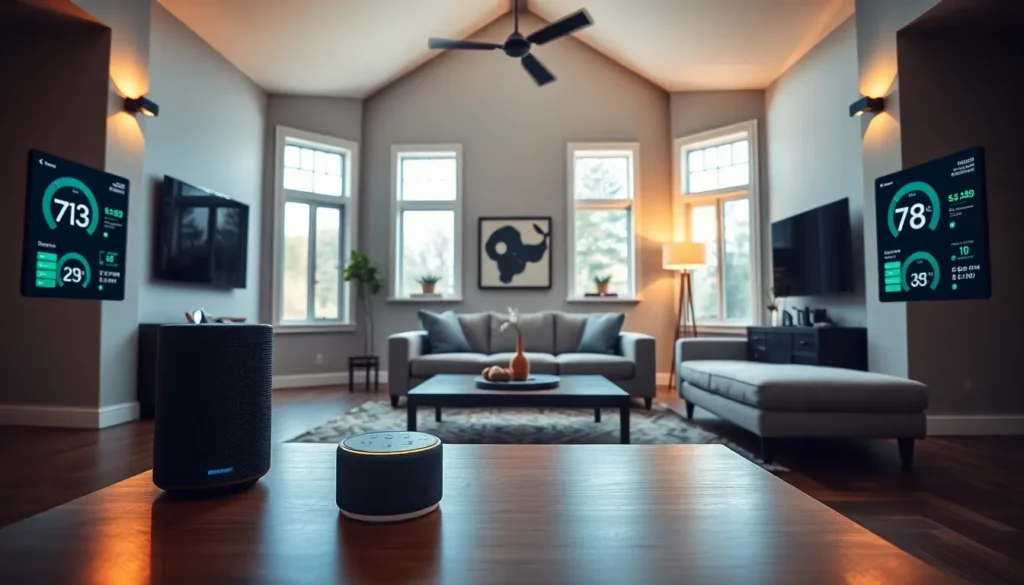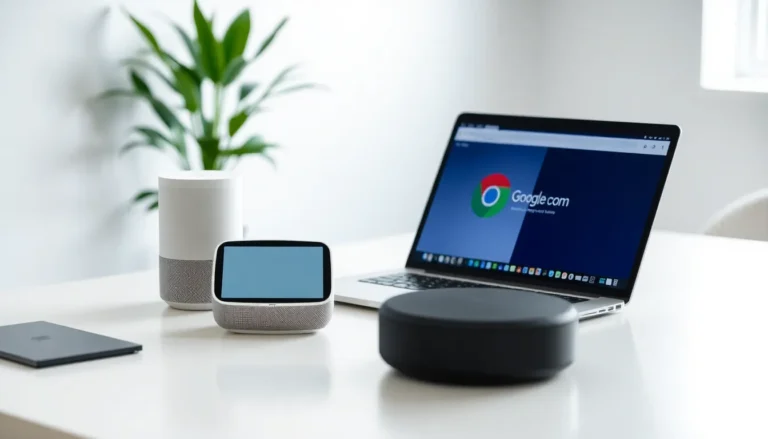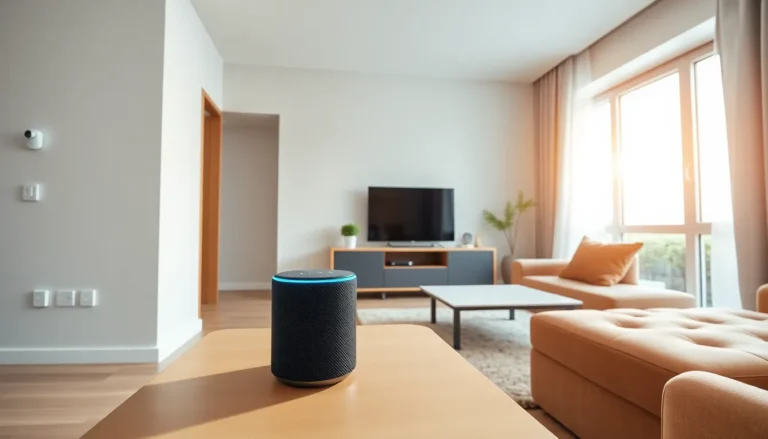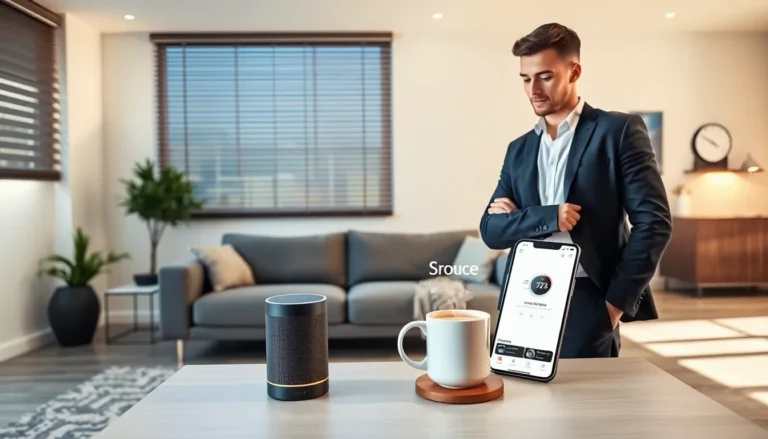Table of Contents
ToggleImagine stepping into a house that responds to your every whim like it’s your own personal butler. Sounds like something out of a sci-fi movie, right? Welcome to the world of IoT homes, where your living space is as smart as your smartphone. The Internet of Things (IoT) is revolutionizing the way we interact with our environments, making our homes not only smarter but more efficient too. Let’s jump into this exciting topic and explore how IoT can change the way you live.
What Is an IoT Home?
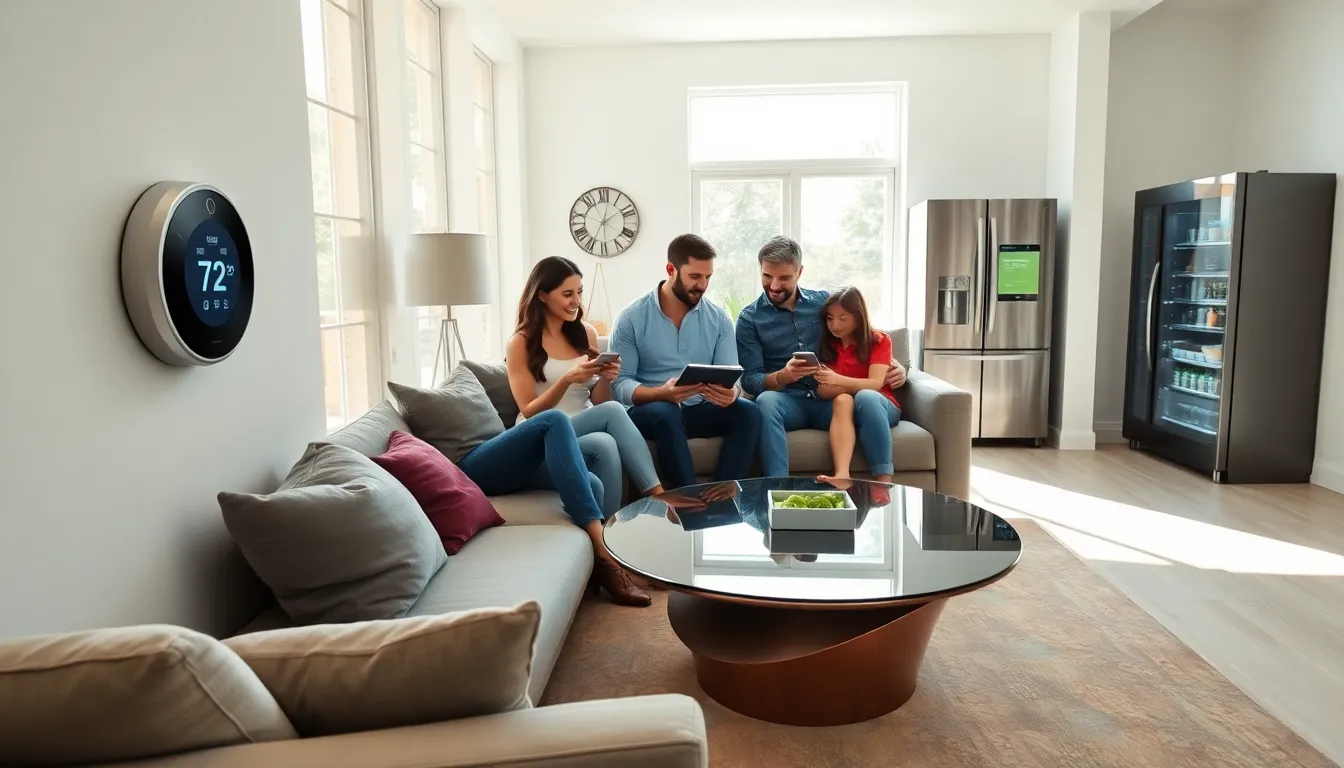
An IoT home refers to a living space where various devices are interconnected through the Internet. This network enables seamless communication between everyday objects. Think of your thermostat automatically adjusting to your preferences, or your fridge reminding you that you’re low on milk. You can control these devices remotely via your smartphone or through voice commands, creating a more convenient and efficient lifestyle. Eventually, an IoT home can be viewed as an ecosystem where everything works together to enhance your quality of life.
Key Components of IoT Homes
Smart Appliances: From refrigerators that can suggest recipes based on what’s inside to washing machines that can be programmed remotely, smart appliances are at the heart of IoT homes.
Smart Devices: This category includes everything from smart speakers that play your favorite tunes to security cameras that keep an eye on your property. They help streamline daily activities and offer heightened security.
Sensors: These little gadgets gather data about the home environment, temperature, light, humidity, and can trigger automated responses, like adjusting heating or lighting when you enter a room.
Smart Hubs: Think of this as the brain of your home. A smart hub connects all your devices, coordinating communication between them to create a wonderfully integrated system.
Mobile Apps: Most IoT devices can be controlled via apps, allowing users to tweak settings, check statuses, and even receive alerts about their home while on the go.
Benefits of Integrating IoT in Your Home
Convenience: Imagine waking up to the aroma of freshly brewed coffee, all thanks to a smart coffee maker set on a timer. The convenience IoT provides is unparalleled.
Energy Efficiency: Smart thermostats can learn your schedule and adjust accordingly, potentially saving energy and lowering utility bills. Who wouldn’t love a lower energy bill?
Enhanced Security: With smart locks and surveillance cameras, homeowners can monitor their property in real-time. This peace of mind is especially comforting for those who travel frequently.
Improved Home Management: Automated routines can be programmed to manage various functions of your home. For instance, you can set your lights to turn on at sunset automatically, enhancing both convenience and security.
Increased Home Value: A fully integrated IoT system can elevate the overall value of a home. Potential buyers are often attracted to smart features that make daily life easier.
Challenges and Considerations for IoT Homes
While the benefits of IoT homes are enticing, challenges also exist.
Privacy Concerns: With increased connectivity comes the risk of data breaches. Users must ensure that their IoT devices are secure to protect personal information.
Compatibility Issues: Not all devices work seamlessly together. A careful selection process is necessary to ensure compatibility across all systems to avoid frustration.
Dependence on Internet Connection: Most IoT devices rely on a stable internet connection. An outage can hinder performance significantly, disabling the convenience these systems offer.
Setup Complexity: The installation of IoT devices can sometimes be complex and overwhelming for non-tech-savvy individuals.
Future Trends in IoT Home Technology
The future of IoT homes looks promising and increasingly innovative.
Artificial Intelligence Integration: AI will become more prominent, enabling devices to learn user preferences and enhance automation significantly.
Increased Interoperability: As more manufacturers adopt common standards, devices will begin to communicate more efficiently, breaking down existing compatibility barriers.
Wearable Technological Integration: Expect smartwatches and fitness trackers to integrate more with home devices, allowing people to control home functionality based on their health metrics.
Voice Activation: With voice technology becoming more sophisticated, users will increasingly rely on voice commands to interact with their IoT devices.
How to Get Started with IoT Home Solutions
Getting started with IoT solutions doesn’t have to be overwhelming. Here are some steps to guide the journey:
- Evaluate Needs: Determine what areas of your home would benefit most from IoT technology. Security? Efficiency? Entertainment?
- Research Devices: Investigate which devices suit your lifestyle. Look for ratings and user reviews to guide your choices.
- Start Simple: Begin with one or two devices, for example, a smart speaker or smart thermostat, before upgrading to a full-fledged system.
- Ensure Compatibility: When purchasing, ensure that any new IoT devices are compatible with your existing systems to avoid any connectivity headaches.
- Set Up with Care: Follow instructions carefully during installation and configuration to make the most of your new devices.

